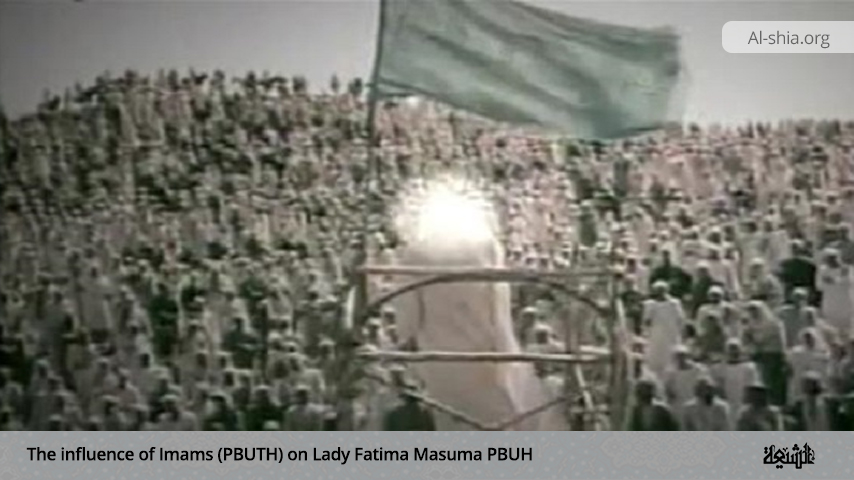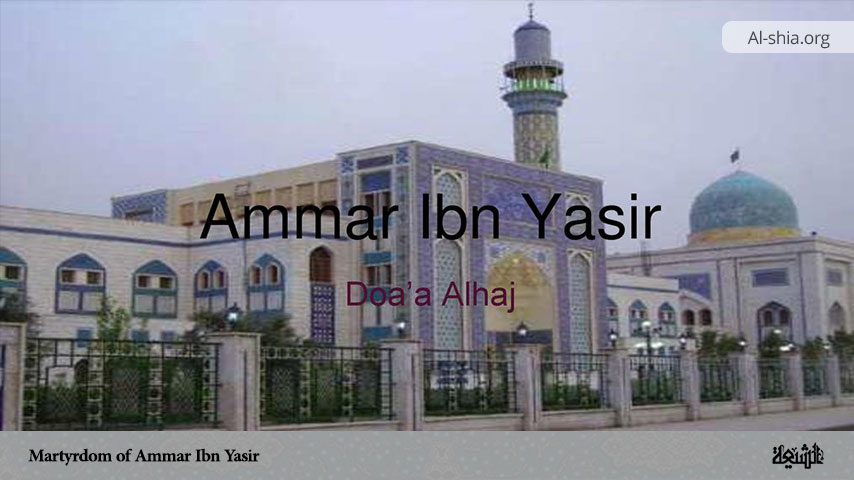According to authentic traditions, during the year 179 A.H, Imam al-Kazim (a.s) was arrested on the orders of Hārūn (the 5th Abbasid Caliph) and taken from Medina to Baghdad via Basra. In Baghdad, he was imprisoned and he remained in prison until his death in the year 183 A.H. This separation of Lady Fatima Masumah (s.a) from her father was very difficult for her.
She longed to see her father again, but this was not possible, because the family of the Imam (a.s) learnt of his death in the prisons of Baghdad about 4 years later.
From the time of the imprisonment of her father, Lady Fatima Masumah (s.a) was under the guardianship of her brother, Imam al-Reza (a.s), who was 25 years older than her. This lasted until the year 200 A.H when he was summoned to Khurāsān by Ma’mūn. This guardianship was according to the will of their father, Imam al-Kazim (a.s).
At the beginning of the will of Imam al-Kazim (a.s), after mentioning the guardianship of Imam Al-Reza (a.s) for his wives and daughters, the following was written:
“…and if anyone of the brothers wants his sister to get married, he must get his (Imam al-Reza’s) permission…” (1)
Imam al-Reza (a.s) was not only instructed to be the guardian of Lady Fatima Masumah (a.s) but also that of all the wives and daughters of Imam al-Kazim (a.s).
Fatima Masumah (s.a) spent the first six years of her life by the side of her noble father, which she utilised to the maximum, learning all she could from him.
Even as a child her level of knowledge and spiritual awareness was very high, as seen in a report by the late Ayatollah Sayyid Nasrullāh Mustanbit (2) who reported that there were some manuscripts found in the Shūshtarī libraries in the Holy city of Najaf, that had the following tradition written on them:
“One Friday, a number of Shi`a went to Medina to meet Imam al-Kazim (a.s) to get some questions answered. But, when they reached the house of the Imam (a.s), they were informed that he was away on a journey. They decided to write their questions on a piece of paper and entrust this to the family of the Imam (a.s) so that when he returned from his journey he could answer the questions.
After a few days in Medina, the Shi`a decided to return home. Before their homeward journey, they passed by Imam’s (a.s) house to say their farewells and here they were given their paper back with all their questions answered.
The replies to their queries had been provided by Lady Fatima Masumah (a.s), who at the time was only six years old.
They left Medina satisfied with the answers. On their journey home, they happened to meet Imam al-Kazim (a.s), who was returning to Medina. They related to the Imam (a.s) the events that had occurred. The Imam (a.s) asked to see the paper with the questions answered by Lady Fatima Masumah (a.s).
After studying her replies and finding all the questions answered so correctly and eloquently by his young daughter, the Imam (a.s) remarked:
May her father be sacrificed for her. Imam (a.s) repeated this phrase three times. (3)
This same phrase had also been used by the Prophet (s.a.w.a) for Lady Fatima Zahra (a.s). (4)
The tradition above demonstrates the special giftedness of Lady Fatima Masuma (s.a), even as a child.
It comes as no surprise, therefore, when we read in her Ziyārat – which was dictated by Imam Ali Reza (a.s), the following:
Salutations to you, Oh Fatima, daughter of Mūsā ibn Ja`far, the proof (hujjah) and trusted one (amīn). (5)
After benefiting for six years from the guardianship of her father, Lady Fatima Masumah (s.a) was then under the supervision of her brother for another 21 years. She took advantage of the opportunity to learn under another Imam (a.s).
Indeed, she acquired such a high spiritual level that, after her passing away, her brother gave her the title of “Masumah” (the infallible). This was high praise indeed, especially from an Imam (a.s).
Source: www.al-islam.org
NOTES:
_______________________
1. Usūl al-Kāfī, vol.1, p. 317.
2. The son-in-law of Grand Ayatollah Sayyid Abū al-Qāsim al-Khū’ī.
3. Kashf al-La’ālī, vol. 7, p. 14.
4. Bihār al-Anwār, vol. 43, pp. 86 & 88.
5. Bihār al-Anwār, vol. 43, p. 88.


















